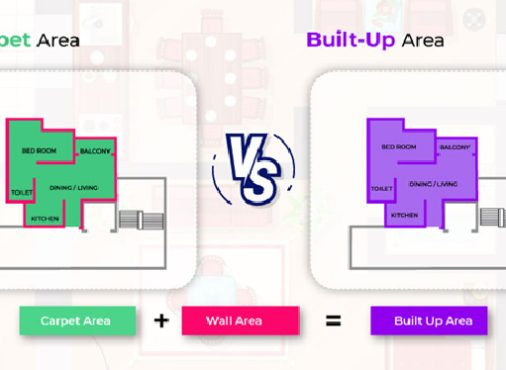Operating bank accounts remotely is difficult for non-resident Indians (NRIs), and the accounts frequently become dormant due to inactivity. NRI dormant account reactivation is crucial for maintaining financial ties with India and ensuring continuous access to funds and investments.
In some cases, when accounts are closed for an extended period (usually 24 months), they are declared dormant, which can limit account activities and create inconveniences in other financial activities. Managing and addressing account inactivity is crucial for NRIs to continue enjoying banking services without obstacles and any legal hitches with the ownership of economic instruments in India.
Understanding Dormant Accounts
A bank account enters NRI bank account inactive status when there are no customer-initiated transactions for a specified period, typically 24 months for savings accounts and 12 months for current accounts. This dormancy is a common occurrence among NRIs due to several factors:
- Relocation without Updating a Bank Account
Failure to change bank details is common when NRIs unexpectedly relocate to a new station, primarily due to employment opportunities. During this transition, most must change their contact details, resulting in better communication between the bank and the individual. Important correspondence has yet to be delivered to the new address, leading to a communication breakdown between the account holder and the bank.
- Focusing on Overseas Banking Services
The transition to overseas banking often causes NRIs to lose sight of their resident local bank accounts only in their country of residence. Having set up their financial operations overseas and having access to better banking, their accounts within India are likely to be less used. This is especially the case where foreign banks can provide more immediate and appropriate online services that fit their banking activities.
- Forgotten Smaller Accounts in India
Accounts maintained in India usually need to be more active, and small accounts are often ignored, even when they are concerned with proper upkeep to some extent. NRIs often have multiple bank accounts active for reasons such as savings, investments, or meeting family expenditures. With time, the accounts with small balances or those opened for single transactions die out and must be more helpful.
- Loss of Account Credentials/Documentation
Another major problem is misplaced or forgotten account codes or IDs. Cash, banking documents, cheques, chequebooks, and debit cards could be lost when moving from one country to another. Moreover, long-term system inactivity causes invalid passwords and forgotten identification details, creating more complex conditions that increase an account’s security.
- Expired KYC Documentation
KYC documentation expiry is the most prevalent technical cause of dormancy. Banks update documents like identification documents, proof of address, and visa at certain times. NRIs find it challenging to provide these documents from overseas due to failure to meet the submission deadlines or the difficulties in providing physical copies of updated documents, which results in account restrictions and dormancy.
Read Also: NRI Investment in India: Opportunities and Strategies for 2024
Legal Framework Governing Dormant Accounts for NRIs
The regulation and policies of NRI account reactivation are aligned with the RBI since there are robust mechanisms regarding the reactivation of these types of accounts, and the risks to the banks and account holders are mitigated very well. These regulations are under FEMA and are supported by specific circulars relating to NRIs’ banking mechanisms.
Setting up requires banks to keep proper records of unclaimed account balances, provide adequate methods of notifying customers and adhere to reactive account transparency while protecting customers against potential fraudsters and unauthorised access.
Key Guidelines From the Reserve Bank of India (RBI)
The RBI’s basic principles include several important aspects of managing inactive accounts.
- Bank current and savings accounts must be classified as dormant when they remain inactive for two years in savings accounts and one year in current accounts.
- However, this classification requires banks to inform account holders through registered communication.
- The guidelines also contain rules against charging unreasonably high fees on inactive accounts while providing that banks must retain the interest accumulation procedure, although with some withdrawal limitations.
- In reactivation, the account holder must go through the account opening formalities, including a fresh set of documents and the NRI account holder’s status check.
- Another regulation proposed by the RBI is that there should be an easy process to reactivate accounts closed due to KYC violations. Initially, the account should have been compliant to let genuine account holders get their money back easily.
Steps to Reactivate Your Dormant Account
Reactivating dormant accounts online for NRIs is an easy process. The applicant needs to follow the below-mentioned steps:
Step 1: Document Preparation:
Start getting your inactive account online for NRIs by collecting a copy of a passport, a valid visa, an overseas address, a PAN card, and photographs. All documents must then be self-attested and notarised where necessary.
Step 2: Bank Communication:
Connect with your bank through their online banking service or their NRI service department. Most Indian banks have dedicated portals through which you can submit a request for reactivation and upload your scanned forms.
Step 3: Verification Process:
To complete the final documentation, perform video KYC if possible or complete the process through one of the bank’s overseas branches. This involves verifying signatures and validating the current physical NRI status.
Step 4: KYC Updation:
Log in to the bank’s website using your account information, and provide current contact information and your overseas address on the updated KYC form. All the supporting documents presented must meet the bank’s requirements.
Step 5: Account Reactivation:
The bank should require a minimum deposit or online fund transfer to activate the account. This ensures ownership and willingness to keep the account active.
Step 6: Access Restoration:
When you decide to get back online, update your Internet banking credentials and mobile banking access. Use notifications to prepare for future inactivity.
Read Also: How To Invest In Commercial Property In India?
Potential Challenges in Reactivation
Some fundamental issues we commonly encounter in the NRI account reactivation process are:
- The main challenge is document authentication, where acquiring and producing certified documents from distant areas can sometimes be challenging and expensive. The banks might demand originals or particular attestation patterns, which makes it tiresome for NRIs who are settled in countries without an Indian consulate.
- Another typical issue is the coordination within the cross-time zones and the lack of communication with Indian banks. The digital applications might be constrained in their functionality, and phone banking services could be disabled for inactivity.
- Another drawback is that the documents related to KYC are generally expired and need to be physically verified, which is a big problem for NRIs who cannot travel to India.
To deal with these difficulties, the following solutions are available for NRIs, the bank’s overseas branches, or representative offices to verify the documents. This simplification is already underway since more and more banks accept video KYC and digital signatures.
They include the legal processes of utilising the authorised representatives in India through Proper Power of Attorney to handle the physical documentation. One should frequently check the status with the bank NRI cell, and it is also helpful to have a soft copy of the submitted documents to save time.
Benefits of Reactivating Your Dormant Account
Financial advantages include:
- The normal interest rates will be immediately restored, and the average earning rates will be gained.
- Proper access to better revenue generation investments and fairer terms.
- Direct opportunity involves the capability to perform smooth foreign exchange transactions.
- Continuation of auto-pays and auto-investments.
- Better tax filing and compliance regulation.
NRIs should review their banking status and take the necessary steps to ensure their financial interests are well-managed and up-to-date. Act now if you wish to buy any residential property from renowned developers like Rustomjee and secure your financial future!
FAQs
1. What is the difference between dormant and inactive accounts?
The primary difference between dormant and inactive accounts lies in the duration of inactivity. A dormant account is one that has had no activity or transactions for a specified period, typically exceeding 12 months.
In contrast, an inactive account is one that has not had any activity for a continuous period, usually defined as fewer than 12 consecutive months.
2. How long does it take to reactivate a dormant account for NRIs?
Reactivating the dormant NRI account usually takes a few working days and 2-3 business days once the necessary documentation is submitted.
3. Can NRIs reactivate their account from abroad?
Yes, NRIs can reactivate their dormant or inactive accounts from abroad by making a debit or credit transaction.
4. What happens if the bank refuses to reactivate my dormant account?
If a bank needs to reactivate your dormant account, you may be exposed to several problems, such as an inability to access your money and new charges. Depending on the bank’s policy and the reason given for its refusal, the account may be closed, with the remaining balance transferred to a suspense account.
5. Do I need to visit the branch in person to reactivate my account?
In most cases, you don’t have to visit your bank’s branch to reactivate the account. You might be able to reactivate it online through internet banking, mobile banking, or by contacting customer service over the phone.







